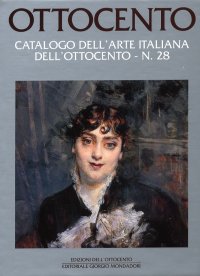Giovanni Boldini. Il Piacere
Rovereto, Mart, November 14, 2020 - February 28, 2021.
Edited by Beatrice Avanzi and Tiziano Panconi.
Genova, 2020; paperback, pp. 368, col. ill., col. plates, cm 24x28.
cover price: € 54.00
|
Books included in the offer:
Giovanni Boldini. Il Piacere
Rovereto, Mart, November 14, 2020 - February 28, 2021.
Edited by Beatrice Avanzi and Tiziano Panconi.
Genova, 2020; paperback, pp. 368, col. ill., col. plates, cm 24x28.
FREE (cover price: € 54.00)
Ottocento. Catalogo dell'Arte Italiana dell'Ottocento. Vol. 30
Milano, 2001; paperback, pp. 495, b/w ill., col. plates, cm 22x30,5.
FREE (cover price: € 40.00)
Ottocento. Catalogo dell'arte italiana dell'Ottocento. VOL. 28
Milano, 1999; bound, pp. 800, col. plates, cm 22x30.
FREE (cover price: € 77.47)
Miró
Janis Mink
Taschen
Köln, 2012; bound, pp. 96, col. ill., cm 24x30.
(Kleine Reihen).
series: Kleine Reihen
ISBN: 3-8365-3652-8 - EAN13: 9783836536523
Subject: Essays (Art or Architecture),Monographs (Painting and Drawing),Painting
Period: 1800-1960 (XIX-XX) Modern Period,1960- Contemporary Period
Languages: 
Weight: 0.78 kg
From the mid-twenties onward, Miró strove to leave direct objective references behind and developed the pictograms that typify his style. The pictures of this period, which include perhaps the most beautiful and significant ones of his whole oeuvre, dispense with spatiality and an unambiguous reference to objects. From then on, the surfaces were defined by numerals, writing, abstract emblems, and playful figures and creatures. In the postwar years be begin producing graphic works, ceramics, monumental murals, and sculptures. In these works, too, the Catalan artist sought the solid foundation of a figurative, symbolic art, featuring faces, stars, moons, rudimentary animal forms, and letters. Joan Miró developed in several stages his characteristic flowing calligraphic style and his world of forms resembling shorthand symbols; from Fauvism to Surrealism by way of his original childlike style, Miró sought to shake up the establishment and in doing so made a name for himself.











